The History of the Roman Catholics of Mangalore - Part One
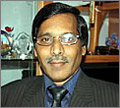
By Alphonse Mendonsa, Pangla, Shankerpura
Bellevision Media Network
The LORD said to Abraham, “Leave your country, your relatives, and your father’s home, and go to a land that I am going to show you” (Gen 12:1)
At a glance…………
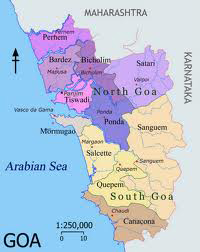 Mangalorean Catholics as we are known today migrated from Goa between 1560 and 1763. We still speak Konkani though we learned other native languages such as Tulu and Kannada. We toiled hard to remain in this beautiful land. We were driven out to Srirangapatana by Tippu Sultan estimated at 60,000 to 80,000, but only a few say 10,000 to 12,000 returned surviving Tippu Sultan’s persecution. Historian Alan Machado Prabhu mentions that only 11,000 survived the captivity as Christians and according to genealogist Michael Lobo, the present Mangalorean Catholic community has descended almost entirely from this small group of survivors.
Mangalorean Catholics as we are known today migrated from Goa between 1560 and 1763. We still speak Konkani though we learned other native languages such as Tulu and Kannada. We toiled hard to remain in this beautiful land. We were driven out to Srirangapatana by Tippu Sultan estimated at 60,000 to 80,000, but only a few say 10,000 to 12,000 returned surviving Tippu Sultan’s persecution. Historian Alan Machado Prabhu mentions that only 11,000 survived the captivity as Christians and according to genealogist Michael Lobo, the present Mangalorean Catholic community has descended almost entirely from this small group of survivors.
At present………
Today, we Mangalorean Roman Catholics are decedents of these small survivors from the clutches of Tippu Sultan and are a very prosperous community spread all over the globe and leading a respectable and dignified life. Mangalore Diocese has so far produced 41 Bishops including some Arch Bishops, Apostolic Nuncios, thousands of priests and religious who work and toil in the vineyard of the Lord. We have also produced Ambassadors, Government officers, statesmen, politicians and even ministers who provide service not only to Mangalore, but whole of Karnataka and India. We have great historians, craftsman, writers, poets, dramatists. Literary figures and virtually excel in every field. We have our own news papers, periodicals and even websites which are viewed by thousand of viewers world-wide including this website and keep updates happening not only in Mangalore but news of Mangaloreans settled all over the globe and our mother tongue is Konkani and we live in this beautiful God given land of honey and milk…. But…..
Trials & Tribulations……..
However, behind this enormous success of our community, our ancestors endured enormous pain, sacrifice and even death to preserve our language Konkani, our Traditions and our Religion. The pain the agony, trials and tribulations which began in Goa in 1560 resulted in fleeing Goa to Mangalore and ended at Srirangapatana from the fifteen years of captivity by Tippu Sultan (from 24th February 1784 (Ash Wednesday) to 4th May 1799 to be precise.
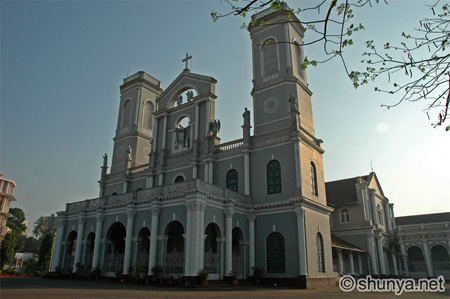
This article will be published in two parts: 1) Escape from Goa - published today and 2) Captivity of Mangalorean Christians by Tippu Sultan and eventual release… will follow soon.
I am Grateful to…
MangaloreanCatholics@yahoogroup.com for their article “History of Konkani” and historian Alan Machado (Prabhu) for a few quotes have been referred from his latest English novel: “Shades within Shadows” which is available currently In Mangalore book stalls and special thanks to Lavina Nazareth, Permude for her inputs on life of Christians under Keladi king of Canara immediately after escape from Goa and most importantly to Elias D’Souza (Bellevision.Com) for his constant encouragement and support to write this article. Without his encouragement I could not have completed this article. (Alphonse, Pangla)
In the beginning………
We are aware that our history and our language Konkani was born way back in 4000bc from Central India on the banks of Saraswati River which was flowing between Yamuna in the east and Sutlej in the west. The mighty river for some reason dried up or went underground around 2500B.C. and its inhabitants had no other option but to migrate to a place called Thrihotraputra or current Tirhoot in Bihar and from there in search of greener pastures slowly moved to Konkan region namely Goa in 1000 A.D. Goa was chosen mainly for its fertile soil and they with their expertise in farming reaped three crops in a year. Their coming down to Goa gave them one valuable inheritance – their name ‘Konkani’ meaning the ‘people of Konkan.

Initially there were only two communities Konkani and Marati and most of them were converted to Christianity and there were other konknai speaking communities lived side by side. However, I am not going to elaborate on other Konkani communities but would like to dwell only on Roman Catholics of Goa who fled to Mangalore or South Canara. The Konkani Christians were then divided into castes- Bahmons (Brahmins), Chaddos, Sudirs, Madivals, Gavdis, Renders, Kumbars and other classes corresponding to the Hindu castes from which they had been converted. Inter-marriages between these castes were not forbidden, but took place, if at all, rarely. I believe even today many of Konkani Catholics do not consent or permit marriages between these classes even if they are Catholics, especially Bahmons would not like to mingle with lower caste Catholics.
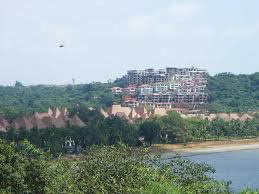 Coming back to our life in Goa, we know that we were all Hindus prior to our conversion to Christianity and almost forcibly converted to Christianity by the Portuguese and many were converted due to poverty and Portuguese offered supply of rice and other essentials for those who converted. However, even after the conversion, it was very hard for our ancestors to give up their age old beliefs, customs and traditions which Portuguese wanted them to abandon. Our ancestors refused to oblige to these new conditions set by Portuguese and hence a new rule or dreaded law was introduced and it was called the “Inquisition”. It hit like a thunderbolt for a peaceful peasant community and especially to the new converts. This terrorizing law impelled our ancestors to escape from Goa to Mangalore, leaving everything behind, their property, cattle, money and everything earned and cared for, friends and many times their close relatives as they had to flee overnight. Many were caught and punished severely. How and why it all began and why we had to flee from Goa to Mangalore? I try to answer as briefly as possible though it would take several pages to give details of incidents that took place from 1560 onwards.
Coming back to our life in Goa, we know that we were all Hindus prior to our conversion to Christianity and almost forcibly converted to Christianity by the Portuguese and many were converted due to poverty and Portuguese offered supply of rice and other essentials for those who converted. However, even after the conversion, it was very hard for our ancestors to give up their age old beliefs, customs and traditions which Portuguese wanted them to abandon. Our ancestors refused to oblige to these new conditions set by Portuguese and hence a new rule or dreaded law was introduced and it was called the “Inquisition”. It hit like a thunderbolt for a peaceful peasant community and especially to the new converts. This terrorizing law impelled our ancestors to escape from Goa to Mangalore, leaving everything behind, their property, cattle, money and everything earned and cared for, friends and many times their close relatives as they had to flee overnight. Many were caught and punished severely. How and why it all began and why we had to flee from Goa to Mangalore? I try to answer as briefly as possible though it would take several pages to give details of incidents that took place from 1560 onwards.
In brief, there were three migrations that took place from Goa to Mangalore, First wave of migrants left due to the Goa Inquisition of 1560. The second and third waves left Goa because of famines, epidemics, and political upheavals such as the Portuguese–Maratha Wars.
Customs and traditions…..
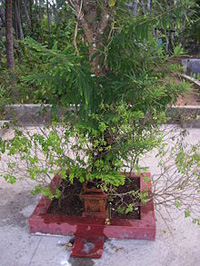 “ When Anant became Antonio he could not wear his puddvem, his wife could not wear her cholli, he had to uproot the tulsi from his land, he could not observe the fast on the eclipse of the moon and he could not place his new-born child on a bed of raw rice. Antonio could not celebrate his son’s wedding as his father had done his, with the anointing of the ros to the accompaniment of vovio; there was to be no ritual bath, no offering of pan or betel nut or flowers. He could not do many things “ (Shades within Shadows)
“ When Anant became Antonio he could not wear his puddvem, his wife could not wear her cholli, he had to uproot the tulsi from his land, he could not observe the fast on the eclipse of the moon and he could not place his new-born child on a bed of raw rice. Antonio could not celebrate his son’s wedding as his father had done his, with the anointing of the ros to the accompaniment of vovio; there was to be no ritual bath, no offering of pan or betel nut or flowers. He could not do many things “ (Shades within Shadows)
To begin, on the 26th February 1510, Goa fell to Portuguese with the surrender of the Muslim forces of Bijapur Sultan. The Portuguese rulers let loose their extreme fanaticism and started a reign of persecution against the Hindus of Goa. As I said earlier that our ancestors were all Hindus prior to their conversion to Catholicism and obviously they practiced their ancestral practices and followed their customs and traditions. They followed some of the customs even after their conversion. These included marriage ceremonies like Roce, reciting Vovyo, putting garlands and many other customs including eating pan, removing slippers prior to entering the Church and even practicing their age old religion secretly and even speaking their mother tongue Konkani.
After they converted to Christianity, our ancestors in Goa were forced to give up their Hindu customs, beliefs, and caste system which they refused oblige. This greatly worried the Catholic Missionaries and they saw it as a threat to the purity of Christian belief and decided to suppress the new converts from practicing their old customs and traditions. St. Francis Xavier, in a letter to John III, King of Portugal (1545), requested an Inquisition to be installed in Goa. Apparently, his intention was to protect Catholics and make them to follow strict rules which he thought would change them and make them good Catholics. Even though Francis Xavier requested the foundation of the Goa Inquisition in 1545, he never saw it happen; it actually commenced eight years after his death.

When it was implemented, Instead of advising or correcting our ancestors and new converts of their blind faith by means of properly educating them they straight way terrorized the new converts which resulted in harsh punishment and deaths by burning. This forced a large number of our ancestors to flee Goa instantly leaving everything behind to preserve their customs and traditions and most importantly their language Konkani as Portuguese insisted upon speaking Portuguese by new converts.
The Inquisition….
“ It was not then known as the Big House, not until the Santo Officio expanded it to accommodate its anticipated guests. Two hundred cells, dark and dank, it was said, were built in excavated earth beneath the Vhoddlem Ghor, to feed and sequester the numerous guests and urge them to confess. Urge them they did with a little fire to warm, not burn, the feet, or water, not sufficient to drown, forced down their throat; sometimes the strappado. They passed the hours in their cells in enforced silence, in the company of the restless ghosts doomed to wander those dark passages of hopelessness and fear. They remained there until judgment day, until the next auto de fe. “ (Shades within Shadows)
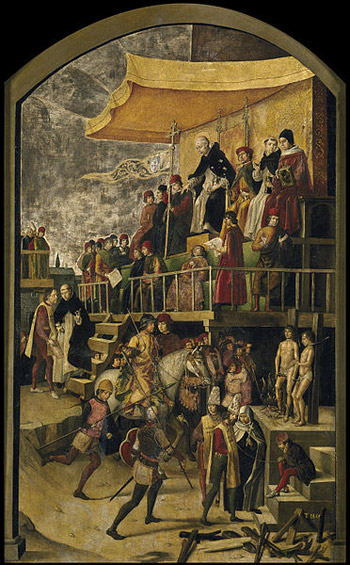
The Inquisition was a system that began during medieval times during the year 1184 in Europe (France, UK and Germany). Initially it was not a punishable law but eventually it became a terrorizing act of severe punishment. The system’s purpose was to search out heretics (one who committed sacrilege or one who went against Catholicism) and prosecute and kill them eventually. The inquisitors would torture the person until they admitted that they were heretics or we can say not a true Christian. After that the inquisitors would kill them either by hanging or even by burning at stake. Once a person was caught for alleged heresy, he was like a trapped rat and he would never see the light of the day. The Inquisition existed in Portugal, Spain and other parts of Europe. Prior to coming to our mother land Goa.
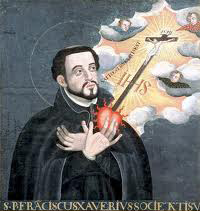 When Portuguese landed in Goa, Catholic Missionaries too landed. As we know, St. Francis Xavier was the one who was instrumental in brining large folk into the fold of Catholicism and as I said earlier our Hindu ancestors could not give up their customs and traditions which were hindering the growth of the religion of new converts, to bring them to the new fold called “ Pure Catholics” this law Inquisition was introduced in Goa in 1578. A large number of Hindus were first converted and then persecuted from 1560 all the way to 1812.
When Portuguese landed in Goa, Catholic Missionaries too landed. As we know, St. Francis Xavier was the one who was instrumental in brining large folk into the fold of Catholicism and as I said earlier our Hindu ancestors could not give up their customs and traditions which were hindering the growth of the religion of new converts, to bring them to the new fold called “ Pure Catholics” this law Inquisition was introduced in Goa in 1578. A large number of Hindus were first converted and then persecuted from 1560 all the way to 1812.
The 1578 handbook for inquisitors spelled out the purpose of inquisitorial penalties: ... “quoniam punitio non refertur primo & per se in correctionem & bonum eius qui punitur, sed in bonum publicum ut alij terreantur, & a malis committendis avocentur”. Translation from the Latin: ... “for punishment does not take place primarily and for the correction and good of the person punished, but for the public good in order that others may become terrified and weaned away from the evils they would commit."
Other than heresy Inquisition practices were also used on offences against Canon Law. This means any one found questioning the Canon Law, (Law of the Church) or anyone questioned the religion or contrary to the religion or the rule of Popes were punished severely resulting in death by burning after continuous torture in torcher cells. But in Goa the inquisition also had the hidden agenda. That is to confiscate property of the victim and therefore many times the Catholics were arrested for petty offences and made forced confessions, tortured and their entire property was been confiscated and their family members taken into custody and left to die. It was one of the tactics by Portuguese to gain complete control over the land and rule Goa with iron hand.
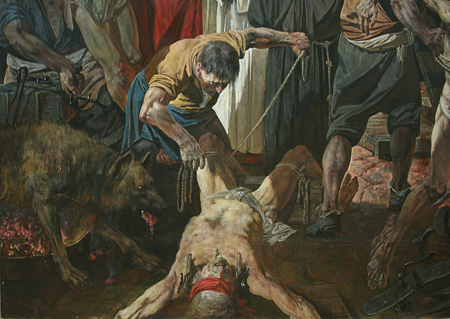
Goan Inquisition, as per some historians was one of the cruelest and terrorizing instruments implemented by the Portuguese rulers to establish their kingdom in Goa firmly. There was also torture cells of which one was called as Big House. King Sebastião I decreed that every trace of Indian customs should be eradicated through the Inquisition. Many Christians of Goa were tenaciously attached to some of their ancient Indian customs, especially their traditional Hindu marriage costumes, and refused to abandon them. Those who refused to comply were forced to leave Goa and to settle outside the Portuguese dominion, which resulted in the first major wave of migrations towards South Canara.
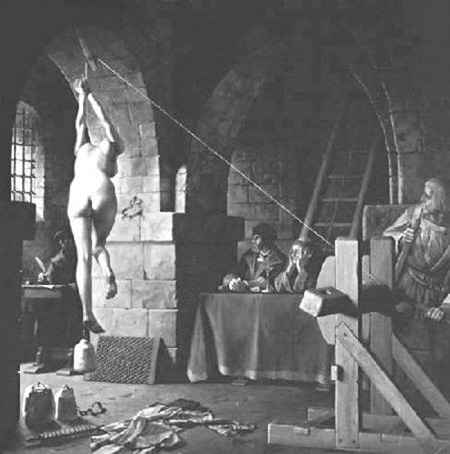
To sum up from 1560 to 1774, a total of 16,172 persons were tried and condemned or acquitted by the tribunals of the Inquisition. While it also included individuals of different nationalities, the overwhelming majority—nearly three fourths were natives, almost equally represented by Christians and non-Christians. Many of these were hauled up merely for crossing the border and cultivating lands there.
Seventy-one autos da fe were recorded. In the first few years alone, over 4000 people were arrested. In the first hundred years, the Inquisition burnt at stake 57 alive and 64 in effigies, 105 of them being men and 16 women. Others sentenced to various punishments totaled 4,046, out of whom 3,034 were men and 1,012 were women. According to the Chronista de Tissuary (Chronicles of Tiswadi), the last auto da fe (Act of Faith - Judgement) was held in Goa on 7 February 1773.
The language factor….
As I said earlier, our language Konkani was born on the banks of Sarvaswaty River approximately 4000B.C. Our ancestors could have tolerated anything but giving up their mother tongue was too much for them. Urged by the Franciscans, the Portuguese viceroy forbade the use of Konkani on 27 June 1684 and further decreed that within three years, the local people in general would speak the Portuguese tongue and use it in all their contacts and contracts made in Portuguese territories. The penalties for violation would be imprisonment. The decree was confirmed by the king on 17 March 1687. However, according to the Inquisitor António Amaral Coutinho’s letter to the Portuguese monarch João V in 1731, these draconian measures did not meet with success. The Bamonns and Chardos were required to learn Portuguese within six months, failing which they would be denied the right to marriage. The Jesuits, who had historically been the greatest advocates of Konkani, were expelled in 1761. In 1812, the Archbishop decreed that children should be prohibited from speaking Konkani in schools and in 1847, this was extended to seminaries. In 1869, Konkani was completely banned in schools. This was one of factor for our ancestors had to flee Goa to preserve our language. Today many of us and our children feel ashamed to speak among ourselves forget about in front of others. Only if they had known the importance of our language and our ancestor’s love, sacrifices and trials they have gone to through to preserve our language. If they could preserve our language for more than 5000 years giving their life for mother tongue isn’t it our duty and dignity to preserve it until the end???? Remember, the mighty river Saraswati died but Konkani survived….
Well these two were the main reasons behind fleeing of our ancestors from Goa to Mangalore in 1560. The second migration took place after 1570 due to sever famines and epidemics and third wave of migrations took place in 1683 due to various wars jointly led by Sultan of Bijapur and Sultan of Ahmednagar against the Portuguese.
The new beginning….
Our ancestors who escaped Goa mostly were farmers who abandoned their irrigated fields in Goa to achieve freedom. At the time of migration, Canara was ruled by the Keladi king Shivappa Nayaka (1540–60). There were vast lands in Canara to produce rice and other grains but no labourers. The king took great interest in the development of agriculture in his empire and welcomed these farmers to his kingdom, giving them fertile lands to cultivate. Some of them were also recruited into the armies of the Bednore dynasty. This was confirmed by Francis Buchanan, a Scottish physician, when he visited Canara in 1801. In his book A Journey from Madras through the Countries of Mysore, Canara and Malabar (1807), he stated that "The princes of the house of Ikkeri had given great encouragement to the Christians, and had induced 80,000 of them to settle in Tuluva." The taxation policies of the Keladi Nayakas during 1598–1763 enabled the Goan Catholic migrants to emerge as prominent landowning gentry in South Canara. These migrants usually brought their own capital from Goa, which they invested in their new lands, thereby indirectly contributing to the prosperity of the Keladi kingdom.
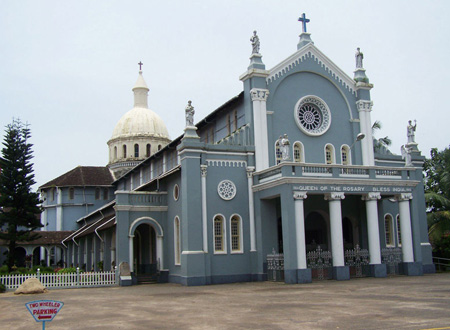
The cast system also played an important role in agriculture. The Brahmin’s who had names like Kamat, Saldhana, Fernandes, Mendonsa, D’Souza were even after escaping from Goa did not prefer to work in the fields. They could have chosen other jobs but they did not and instead they bought lands with the capital they had and gave the lands to the lower caste people on interest (Ghenn) who produced in abundantly. This also helped Keladi king to sell produce to Portugese in Goa as there was shortage of rice and other agriculture products. In the British records of 1799-1800, the escaped Goans were recognized as one of the best farmers in Kelladi Kingdom who helped Keladi Kingdom to grow and flourish and became very rich selling its produce to Goa and other parts of India.
 Finally our ancestors were all well settled in Canara and were involved heavily in agriculture and cultivation and slowly ventured into other businesses as well. They learned the local languages and were freely mingled with other Hindu and muslim brethren in Keladi Kingdom. Even though they were well settled and learned local languages like Tulu and Kannada, they did not give up their mother tongue Konkani in any situation and surprisingly even their new religion that is Roman Catholicism. Marriages and other rituals and customs of their ancestors continued to follow. Marriages were strictly within the religion and even within their own casts i.e. Bamonns with Bamonn’s only and even now this practice is followed in the areas in the coastal Karnataka. Hence the population of Mangalorean Catholics grew fast and spread across the coastal area from Barkur, Brahmawar, Kundapura till Kasargod and became rich in trade, agriculture and were admired for their hard work and eventually they owned vast lands and other Hindus worked in their lands as well. In one of the letters written by Tippu Sultan, he has said that the Catholics in Coastal Karnataka were hard workers and they have involved in all out progress of the kingdom by involving themselves many trades such as Agriculture, cultivation, farming, property business and even cattle breeding, etc. Slowly they forgot their mother land Goa and the Mangalore became their new home and eventually called Mangaloreans.
Finally our ancestors were all well settled in Canara and were involved heavily in agriculture and cultivation and slowly ventured into other businesses as well. They learned the local languages and were freely mingled with other Hindu and muslim brethren in Keladi Kingdom. Even though they were well settled and learned local languages like Tulu and Kannada, they did not give up their mother tongue Konkani in any situation and surprisingly even their new religion that is Roman Catholicism. Marriages and other rituals and customs of their ancestors continued to follow. Marriages were strictly within the religion and even within their own casts i.e. Bamonns with Bamonn’s only and even now this practice is followed in the areas in the coastal Karnataka. Hence the population of Mangalorean Catholics grew fast and spread across the coastal area from Barkur, Brahmawar, Kundapura till Kasargod and became rich in trade, agriculture and were admired for their hard work and eventually they owned vast lands and other Hindus worked in their lands as well. In one of the letters written by Tippu Sultan, he has said that the Catholics in Coastal Karnataka were hard workers and they have involved in all out progress of the kingdom by involving themselves many trades such as Agriculture, cultivation, farming, property business and even cattle breeding, etc. Slowly they forgot their mother land Goa and the Mangalore became their new home and eventually called Mangaloreans.
However, what seems to be a Golden area for them soon to be turned to be a hell. A dark cloud was looming on the horizon of Canara and eventually would become a hurricane that would wipe out the entire Mangalorean Konkani Catholic community and all their dreams and aspirations were to be shattered..
The Captivity and Persecution… (To be continued……in Part Two)
The second part of this article which will be published next month on this site which will narrate the sad story of Mangalorean Catholics who were entirely and systematically driven out from Canara to Srirangpatanam (Mandya) on a Ash Wednesday, one of the most Holy day in the life of Catholics. It was the day of fast and penance in preparation for the feast of Pask (Easter) but it turned out be a nightmare and only a handful of them could return to Mangalore after 15 years of imprisonment and persecution. The complete history of 15 years of imprisonment and persecution, trials and tribulations, pain and agony…. of our ancestors ….
To be continued shortly…




 Write Comment
Write Comment E-Mail To a Friend
E-Mail To a Friend Facebook
Facebook Twitter
Twitter  Print
Print 















My question is this: Now that India is a free, independent country, and Goa having been liberated from Portuguese rule, why don t the Goan Catholic Brahmins and Konkani-speaking Catholics and other forcibly-converted Hindus return to the religion of their ancestors? Your ancestors suffered agony and torture and were converted through force by the Portuguese. I and many others feel sorrow, deep sorrow for you wonderful people. But now all of you can return to the spiritual traditions followed by your noble ancestors. Why don t you?
So now it is time that we should get united not only Manglorean roman catholic (kashmiri saraswat brahman) but all kashmiri saraswat brahman from every part of world.
It is sad that the very man francis xavier, whom the catholics venerate as St. Francis Xavier, was responsible for the inquisition. I am sure 90 % of goan christians dont even know that francis xavier was a man with an evil intention....
A very good article. keep up the good work.